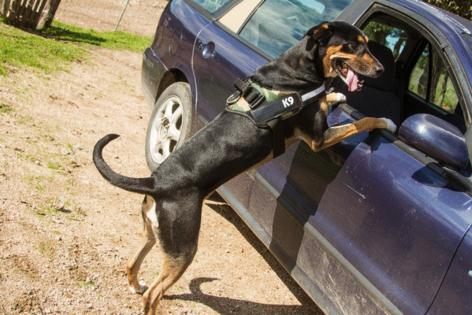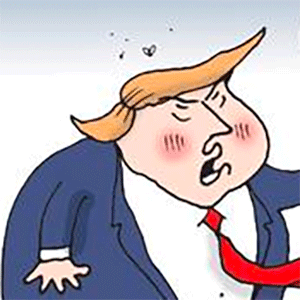Commentary: Dogs are drafted into police work, and they are dying on the job
Published in Op Eds
On a sweltering day in Georgia last month, a police K9 named for the state she worked in died on the job. A deputy reportedly left her in a patrol car for “an unacceptable amount of time.” The air conditioning unit in the vehicle failed. So did the heat alarm that was supposed to prevent such a tragedy.
Baking to death in a hot car is a horrific way to die. Despite being completely preventable, it’s among the top causes of death for dogs used by police departments. Dogs cannot sweat like humans do, and Georgia surely panicked. Vomited. Convulsed. And then died alone and helpless as her organs shut down.
Dogs don’t enlist, sign up or agree “to protect and serve.” Instead, they’re drafted and used as tools in a system that puts them at risk without their consent. And many K9s pay for it with their lives.
Georgia’s handler was fired, but that won’t bring her back—or the many other police dogs who have been injured, abandoned or killed in the line of duty. At the 69th Street Red Line station on Chicago’s South Side, surveillance footage and cell phone cameras caught the scene as a fight erupted. In the middle of it all—quite literally—was a K9. The videos show someone violently hurling a trash can at the dog.
Society has come to view the use of dogs in law enforcement as acceptable, so we rarely pause to question it. And while many—if not most—K9 handlers respect and value their K9s, whom they trust with their lives, it doesn’t change the fact that police use these sensitive, loyal animals as living shields in conflicts they can’t possibly understand.
In Garden City, Idaho, police sent a K9 to locate a suspect with a known criminal history. When police attempted to make the arrest, the man allegedly tried to suffocate the dog by crushing his snout.
This isn’t a new problem. I remember the day in 1981 when President Reagan was shot outside the Washington Hilton. A dog named Kirk stood with the officers. Kirk was once labeled “unadoptable” and left behind at the D.C. Pound, where I served as poundmaster. We started a program to give dogs like him a second chance by training them for police work. It felt like a good idea at the time.
Kirk’s handler loved him dearly, and when he was injured that day in D.C., he retired and went home with his family. Back then, officers cherished their dogs and didn’t send them into dangerous situations they wouldn’t enter themselves. Looking back, though, what does it say about our system that a dog’s “second chance” meant standing in the line of fire?
In recent years, multiple videos have surfaced of officers punching their K9s in the face. In the face. These dogs are supposed to be their partners. Police departments often try to justify such actions as “corrections.” But abuse is never acceptable. A dog being struck by someone he trusts is not learning. He is confused and frightened.
Some police departments—including those in New York, Massachusetts and Houston—already use tactical robots to minimize the danger to human and canine officers in high-risk scenarios. If we have this technology available, why are we still using K9s? Dogs deserve protection from human conflict, not forced participation in it.
____
Ingrid Newkirk is the founder of People for the Ethical Treatment of Animals (PETA), 501 Front St., Norfolk, VA 23510; www.PETA.org.
_____
©2025 Tribune Content Agency, LLC.

























































Comments